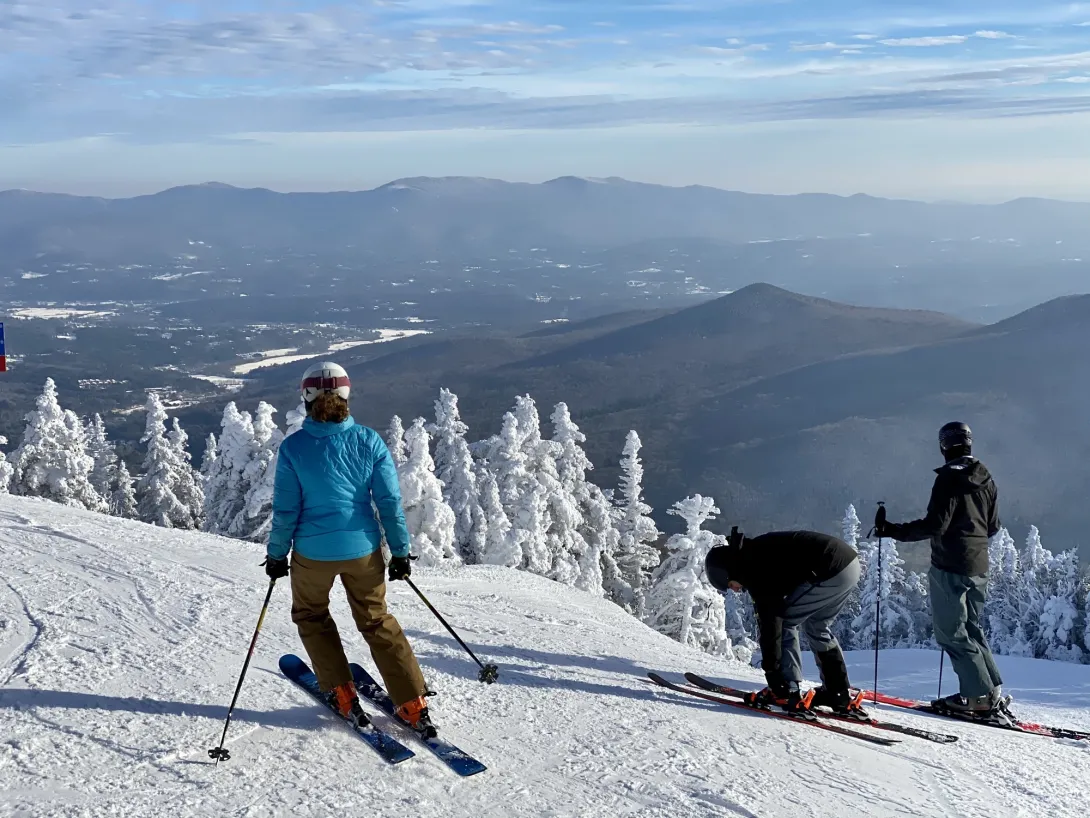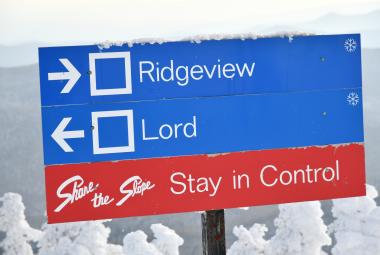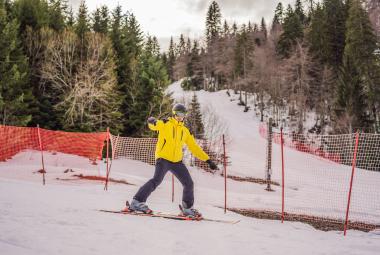Learning to ski as an adult can be an intimidating process. I know, because I went through it! But it’s never too late to learn a new skill! And the best time is now.
Learning to ski as an adult can bring many benefits, both physical and mental. Physically, skiing is a great cardiovascular exercise that can help improve endurance, balance, and coordination. It can also be a great way to relax and de-stress after a long day or week.
Skiing is such a fun way to explore and appreciate the natural beauty of winter landscapes, and my favorite way to spend a weekend with friends! Overall, learning to ski as an adult can be a rewarding and enjoyable experience.
The Challenges of Learning To Ski As An Adult

Among many benefits, there are a few challenges that adults may face when learning to ski. One challenge may be physical fitness. Skiing is a physically demanding activity, especially for beginners who may not be used to the movements and exertion required. It is important for adults to build up their physical strength and endurance before hitting the slopes.
Another challenge may be fear or anxiety, as adults aren’t always as keen to be a beginner at something. It is natural to feel nervous when trying something new, but it is important to remember that everyone starts somewhere!

Another challenge may be time and resources. As adults, we often have many responsibilities and commitments that can make it difficult to find the time and money to invest in learning a new hobby. However, with some careful planning and budgeting, it is possible to make time and resources available for learning to ski.
With patience, persistence, and a positive attitude, adults can overcome these challenges and learn to ski with confidence.
Keep reading to learn our top tips for learning to ski as an adult!
Getting In Shape For Ski Season As An Adult

If you are an adult looking to get in shape for ski season, there are several things you can do to prepare your body for the physical demands of the sport. First and foremost, start exercising regularly, specifically to improve your stamina, leg strength, and balance.
Skiing requires strong leg muscles to help you navigate the slopes and maintain balance. Incorporate exercises such as squats, lunges, and leg presses into your workout routine to build up strength in your legs. Consider activities such as walking, running, cycling, or swimming to get your heart rate up. It’s also important to stretch to improve your flexibility and reduce the risk of injury on the slopes. You don’t have to train like you’re going for an Olympic gold medal, but adding in some additional movement and exercise will be beneficial on the slopes.
Taking Ski Lessons As An Adult

Taking ski lessons can be a great way to learn the fundamentals of skiing. Taking ski lessons as an adult can be intimidating, but it’s a necessary step in the process. You can either take private or group lessons.
If you take group lessons, you’ll likely get paired with other adults. Be open to learning, failing, trying new techniques and approaches. Absorb everything from the instructor that you can, ask tons of questions when you have them, and take breaks when needed.
And remember that it takes time and practice to improve. You’ll find that when you have a good instructor, are open to learning, and make skiing an enjoyable experience, you’ll be racing to the mountain every chance you get!
Common Mistakes To Avoid As An Adult Learning How To Ski

As an adult learning to ski, it is natural to make mistakes as you learn and improve your skills. Here are a few common mistakes to avoid as an adult learning to ski:
Not wearing proper equipment: Make sure to wear a helmet and properly fitting ski boots, skis, and poles to ensure your safety and comfort on the slopes.
Not paying attention to your instructor: It is important to listen to your instructor and follow their instructions to learn the correct techniques and improve your skills.
Skiing beyond your ability level: It is important to ski within your ability level and not try to tackle terrain that is too difficult for your skill level. This can increase the risk of injury and frustrate you.

Neglecting to warm up: Skiing can be physically demanding, so it is important to warm up your muscles before hitting the slopes. This can help prevent injury and improve your performance.
Not taking breaks: Skiing can be tiring, especially for beginners. Make sure to take breaks when you need them to rest and recharge.
Tips For Avoiding Injuries While Skiing

Injuries can happen on the slopes when you’re learning and working on improving your skills. But most common injuries on the slopes can be avoided with some simple tips!
First, it’s important to wear the right equipment: Make sure you have the appropriate ski equipment for your ability level, a helmet, goggles, gloves, and warm proper-fitting clothing. This will ensure you have a safe and comfortable day.
Take it slow. Don't try to ski too fast or tackle terrain that is beyond your abilities. Start on gentle slopes and work your way up as you become more comfortable and skilled. Keep an eye out for other skiers and avoid skiing too close to them. Stay in control at all times and be aware of any potential hazards on the mountain, such as trees, rocks, and other obstacles.
Lastly, know your limits and don't push yourself too hard. Take breaks as needed and listen to your body. If you start to feel tired or sore, take a breather or call it a day. Apres ski activities can be just as fun as your time on the slopes and will allow you to ski longer the next day!
Bonus tip: Stay hydrated! Skiing is more physically demanding than you think, so make sure you stay hydrated by drinking water throughout the day.
Conclusion

Learning to ski as an adult can be both a fun and rewarding experience! The best time to start is now!
By following some practical tips, such as taking a lesson, wearing the appropriate equipment, taking it slow, and staying aware of your surroundings, you can improve your skills and stay safe on the mountain.
Don't be afraid to take breaks as needed, and listen to your body to avoid overdoing it. With the right mindset and a little practice, you'll be gliding down the slopes with confidence in no time!







